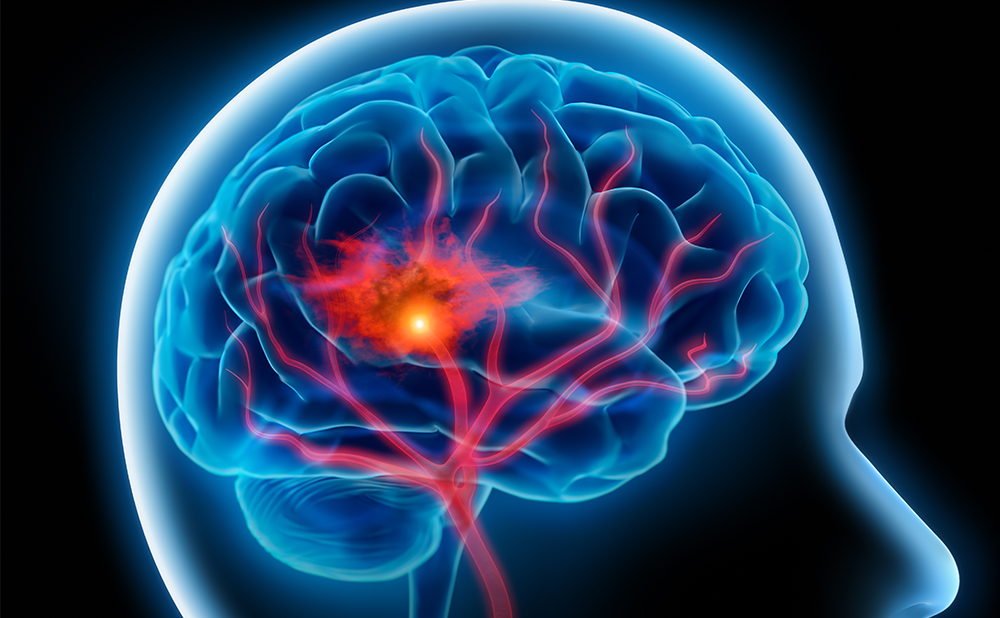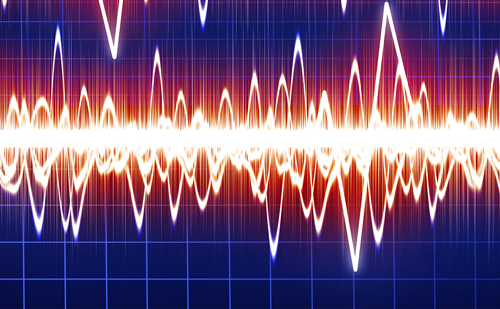Fluorescence angiography was first used by ophthalmologists to measure retinal blood flow by using the fluorescent dye fluorescein. Feindel et al.1,2 were the first to apply the concept of fluorescence angiography to the intraoperative visualisation of cerebral vertebral arteries and cerebral microcirculation in patients undergoing neurosurgical procedures.3,4 With the use of indocyanine green (ICG) as a novel fluorescent dye, and its integration into a compact system that takes advantage of modern video technology, fluorescence angiography has recently re-emerged as a viable option.5,6 Raabe et al.5,6 were the first to demonstrate that ICG videoangiography is suitable for the intraoperative assessment of cerebral vascular flow, thereby providing a useful adjunct for the intraoperative control of vessel patency and aneurysm occlusion during standard aneurysm surgery. Woitzik et al.7 also showed the efficacy of ICG videoangiography during extracranial–intracranial bypass surgeries.
The advantage of ICG over fluorescein is that the light emission is more intense and easier to detect and is characterised by lower rates of adverse reactions, which makes it comparable to other types of contrast media.5–7 ICG was approved by the US Food and Drug Administration (FDA) in 1956 and 1975 for cardiocirculatory measurements, liver function tests and ophthalmic angiography.1,2 In this article, we will present cases in which ICG videoangiography is useful during treatment, to demonstrate the efficacy of the technique in the field of cerebrovascular surgery and to show that the method is a safe and simple method for assessing the microcirculation of the brain.
Method and Patient Case Studies
Microscope Integration of Indocyanine Green Videoangiography
The Carl Zeiss Co. (Oberkochen, Germany) integrated the ICG videoangiography technology into its microscope. The system was designed to integrate near-infrared (NIR) imaging into the surgical miscroscope to assist in obtaining high-resolution and high-contrast NIR images. The operating field was illuminated by a light source with a wavelength covering part of the ICG absorption band (range 700–850nm, maximum 805nm). ICG dye was injected into a peripheral vein as a bolus (the standard 25mg dose dissolved in 10ml of water), and ICG fluorescence was induced after the dye solution arrived in the vessels of the NIR light-illuminated field of interest. The fluorescence (range 780–950nm, maximum 835nm) was recorded by a non-intensified video camera. An optical filter blocked both ambient and excitation light so that only ICG-induced fluorescence was collected. Thus, arterial, capillary and venous angiographic images could be observed on the video screen in realtime. The set-up allowed high-resolution NIR images based on ICG fluorescence to be visualised without eliminating visible light during the investigation.
Patients
From January 2007 to March 2008, a total of 32 patients received ICG videoangiography during surgical procedures at Kyoto University Hospital. Included among them were eight cases of extracranial– intracranial (EC–IC) bypass, four cases of cerebral arteriovenous malformations (AVMs) and 13 cases of cerebral aneurysms.
Illustrated Cases
Case 1 – Extracranial–Intracranial Bypass
A 58-year-old female suffered from transient ischaemic attacks. Cerebral angiography revealed left intracranial internal carotid arterial severe stenosis. Single photon emission computed tomography (SPECT) with diamox challenge showed a reduction of cerebral blood flow and cerebrovascular reserve capacity in the left hemispheres. We performed a superficial temporal artery to middle cerebral artery (STA–MCA) bypass, and ICG videoangiography demonstrated the patency of the bypass (see Figure 1).
Case 2 – Arteriovenous Malformation
A 10-year-old girl presented with intracerebral haemorrhage, and cerebral angiography revealed parietal arteriovenous malformations (AVM). We planned to perform parietal craniotomy for the removal of AVM. After the nidus, but not the draining vein, was totally dissected from the surrounding brain parenchyma, ICG videoangiography demonstrated that the nidus was not visualised when the draining vein was absent, but only during the ‘to-and-fro’ flow of ICG (see Figure 2).
Case 3 – Cerebral Aneurysm
A 73-year-old man showed right hemiparesis. Magnetic resonance (MR) angiography indicated an anterior cerebral artery aneurysm, the diameter of which was 12mm. Cerebral angiography revealed the stenosis of the proximal part of the anterior cerebral artery (ACA) (see Figure 3). We performed frontal craniotomy and clipping of the aneurysm. After a clip was applied to the neck of the aneurysm, ICG videoangiography showed the patency of the distal part of the ACA (see Figure 3).
Discussion
In this report, we showed three representative cases in which ICG videoangiography was useful in the procedure. Recently, the ICG video technique was integrated into a surgical microscope.6 This advance improved the simplicity and speed with which the procedure can be used. There is no need to move the microscope out of the surgical field or to interrupt the operation.6 The results for all patients of ICG videoangiography were available within several minutes. Moreover, this imaging technique can easily be repeated as often as needed. Consequently, ICG angiography may be a simple tool for intraoperative quality control and documentation of surgical outcomes.5,6
In the cerebrovascular surgery field, ICG videoangiography has the potential to improve operative outcomes. As for EC–IC bypass surgery, ICG videoangiography can reduce early bypass graft failure and improve surgical results.7 EC–IC bypass surgery may be indicated for patients with haemodynamic cerebrovascular disease, moyamoya disease or giant aneurysms and large skull base tumours requiring vessel sacrifice or vessel segment trapping.8–11 One potential obstacle to successful EC–IC bypass surgery is early bypass graft occlusion and concomitant bypass failure.8,9 Unrecognised early bypass graft occlusion may lead to cerebral ischaemia, which is responsible for morbidity associated with EC–IC bypass surgery.8,9 Based on this, a reliable intraoperative assessment of EC–IC bypass function would be beneficial and may help decrease surgical risks. Wortzik et al.7 reported that ICG videoangiography was useful for the revision of four of 35 STA–MCA bypasses. In addition, all four cases exhibited good filling of the bypass according to repeated ICG videoangiography. In our cases, it detected early bypass failure in one of eight cases.
As regards aneurysm surgery, Raabe et al.5 reported that the incidences of residual filling of aneurysms ranged from 2 to 8% and occurrences of parent or branching artery occlusion ranged from 4 to 12%.12–19 Furthermore, several reports indicated that intraprocedural changes significantly affected the surgical procedure in 7–34% of cases.12–19 They also showed that the findings identified on ICG videoangiography were consistent with those on post-operative digital substraction angiograms.5,6 The ICG technique provided information relevant to the surgical procedure in 9% of cases, including vessel occlusion or stenosis and residual filling of aneurysms.5,6 Among our 14 cases of cerebral aneurysms, we re-arranged the position of clips in two cases based on the image of ICG videoangiography. Perforating arteries are commonly involved during the surgical dissection and clipping of intracranial aneurysms. During aneurysm surgery, Oliveira et al.20 reported that in the surgical field perforating arteries were found in 36 of 64 cases.
We presented one case of cerebral AVM in the study. ICG videoangiography is effective in cases where cerebral AVMs are located in the superficial surface of the brain. In our study, we completed a dissection of the nidus without antegrade flow in the drainer. As for AVM removal, several novel technologies have been applied.21,22 Neuronavigation was one of them and was useful in safe removal;21,22 however, it cannot assess the flow of AVMs. We also reported the effectiveness of ICG videoangiography for the detection of residual nidus cerebral AVMs in children.23 Residual nidus of AVMs were easily re-ruptured according to previous reports.24 In such cases, the right femoral artery occluded during the first operation; therefore, we could not employ intraoperative cerebral angiography.
Angiographic views provided by the ICG video technique are restricted to the field of view through the microscope.5,6,20 Vessels covered by blood clots, aneurysm or brain tissue and those not visible to the surgeon cannot be observed using this technique;5,6,20 therefore, ICG videoangiography cannot exclude the presence of a neck remnant of a clipped aneurysm when the residual lesion cannot be seen.5,6,20 Raabe et al.5 indicated that another disadvantage is that the area of observation for contrast flow is much smaller during ICG videoangiography than during digital substraction angiography. ICG fluorescence may also be affected by calcifications and thick-walled atherosclerotic vessels or by partially or completely thrombosed aneurysms. Intraoperative cerebral angiography remains the method of choice for such cases and for complex or giant aneurysms. Taking these topics into account, it makes sense to use ICG videoangiography in combination with other methods (such as visual inspection, intraoperative angiography and Doppler ultrasonography) to evaluate difficult cases.
In this study, we showed the effectiveness of ICG videoangiography in cases of EC–IC bypass, cerebral aneurysms and cerebral AVMs. Apart from these cases, ICG videoangiography has the potential to detect a shunt point in a dural arteriovenous fistula and the patency of dural sinus during tumour surgery. During carotid endoarterectomy, ICG videoangiography can detect the location of plaques and show their patency. Several methods exist to assess the cerebral circulation during surgical procedures. In future studies, it will be necessary to confirm differences between the results achieved with intraoperative cerebral angiography, Doppler ultrasonography and ICG videoangiography.
In summary, we demonstrated the efficacy of ICG videoangiography in cerebrovascular surgery. We believe that ICG videoangiography has the potential to achieve the goal of routine intraoperative vascular imaging during cerebrovascular surgery. ■
Acknowledgement
We would like to thank Carl Zeiss Meditec Co. Ltd, Tokyo for its kind assistance in allowing the use of the microscope-integrated ICG videoangiography technology.














